An Improved Wireless Battery Charging System
Abstract
:1. Introduction
2. Current Source Characteristic of Series-Series Compensated Wireless Power Transfer
3. Implementation of CC-CV and MCC Charging
3.1. CC-CV Charging Profile
3.2. MCC Charging Profile
3.3. Other Charging Profile
4. Experimental Verification
4.1. Experimental Conditions
4.2. CC and CV Charging Profile
4.3. MCC Charging Profile
5. Conclusions
Acknowledgments
Author Contributions
Conflicts of Interest
References
- Jiang, H.; Brazis, P.; Tabaddor, M.; Bablo, J. Safety considerations of wireless charger for electric vehicles—A review paper. In Proceedings of the 2012 IEEE Symposium on Product Compliance Engineering Proceedings, Portland, OR, USA, 5–7 November 2012. [Google Scholar]
- Why Not A Wire? The Case for Wireless Power, Texas Instruments. Available online: http://www.wirelesspowerconsortium.com/technology/why-not-a-wire-the-case-for-wireless-power.html (accessed on 28 March 2018).
- Texas Instruments (TI), “bq51050B and bq51051B Datasheet”. Available online: http://www.ti.com/lit/ds/symlink/bq51050b.pdf (accessed on 28 March 2018).Linear Technology, “LTC4120 Datasheet”. Available online: http://cds.linear.com/docs/en/datasheet/4120fa.pdf (accessed on 28 March 2018).
- Li, P.; Bashirullah, R. A Wireless Power Interface for Rechargeable Battery Operated Medical Implants. IEEE Trans. Circuits Syst. II 2007, 54, 912–916. [Google Scholar] [CrossRef]
- Dearborn, S. Charging Li-ion batteries for maximum run times. Power Electron. Technol. 2005, 40–49. Available online: www.powerlectronics.com (accessed on 28 March 2018).
- Chen, M.; Rincón-Mora, G.A. Accurate, Compact, and Power-Efficient Li-Ion Battery Charger Circuit. IEEE Trans. Circuits Syst. II 2006, 53, 1180–1184. [Google Scholar] [CrossRef]
- Lin, C.-H.; Hsieh, C.-Y.; Chen, K.-H. A Li-Ion Battery Charger with Smooth Control Circuit and Built-In Resistance Compensator for Achieving Stable and Fast Charging. IEEE Trans. Circuits Syst. I Regul. Pap. 2010, 57, 506–517. [Google Scholar]
- Bruno, D.V.; Wentz, C.T.; Sarpeshkar, R. An Area and Power-Efficient Analog Li-Ion Battery Charger Circuit. IEEE Trans. Biomed. Circuits Syst. 2011, 5, 131–137. [Google Scholar]
- Inoa, E.; Wang, J. PHEV Charging Strategies for Maximized Energy Saving. IEEE Trans. Veh. Technol. 2011, 60, 2978–2986. [Google Scholar] [CrossRef]
- Chen, B.-Y.; Lai, Y.-S. New digital-controlled technique for battery charger with constant current and voltage control without current feedback. IEEE Trans. Ind. Electron. 2012, 59, 1545–1553. [Google Scholar] [CrossRef]
- Liu, Y.-H.; Teng, J.-H.; Lin, Y.-C. Search for an optimal rapid charging pattern for lithium-ion batteries using ant colony system algorithm. IEEE Trans. Ind. Electron. 2005, 52, 1328–1336. [Google Scholar] [CrossRef]
- Ikeya, T.; Iwasaki, M.; Takagi, S.; Sugii, Y.; Yada, M.; Sakabe, T.; Kousaka, E.; Tsuchiya, H.; Kanetsuki, M.; Nasu, H.; et al. Collaborative investigation on charging electic-vehicle battery systems for night-time load levelling by Japanese electric power companies. J. Power Sources 1997, 69, 103–111. [Google Scholar] [CrossRef]
- Ikeyaa, T.; Sawadab, N.; Takagic, S.; Murakamic, J.-I.; Kobayashid, K.; Sakabee, T.; Kousakaf, E.; Yoshiokag, H.; Katoh, S.; Yamashitai, M.; et al. Multi-step constant-current charging method for electric vehicle, valve-regulated, lead/acid batteries during night time for load-levelling. J. Power Sources 1998, 75, 101–107. [Google Scholar] [CrossRef]
- Ikeya, T.; Sawada, N.; Takagi, S.; Murakami, J.-I.; Kobayashi, K.; Sakabe, T.; Kousaka, E.; Yoshioka, H.; Kato, S.; Yamashita, M.; et al. Charging operation with high energy efficiency for electric vehicle valve-regulated lead–acid battery system. J. Power Sources 2000, 91, 130–136. [Google Scholar] [CrossRef]
- Ikeya, T.; Sawada, N.; Murakami, J.-I.; Kobayashi, K.; Hattori, M.; Murotani, N.; Ujiie, S.; Kajiyama, K.; Nasu, H.; Narisoko, H.; et al. Multi-step constant-current charging method for an electric vehicle nickel/metal hydride battery with high-energy efficiency and long cycle life. J. Power Sources 2002, 105, 6–12. [Google Scholar] [CrossRef]
- Liu, Y.-H.; Hsieh, C.-H.; Luo, Y.-F. Search for an Optimal Five-Step Charging Pattern for Li-Ion Batteries Using Consecutive Orthogonal Arrays. IEEE Trans. Energy Convers. 2011, 26, 654–661. [Google Scholar] [CrossRef]
- Liu, Y.-H.; Luo, Y.-F. Search for an Optimal Rapid-Charging Pattern for Li-Ion Batteries Using the Taguchi Approach. IEEE Trans. Ind. Electron. 2010, 57, 3963–3971. [Google Scholar] [CrossRef]
- Wang, C.-S.; Covic, G.A.; Stielau, O.H. Power transfer capability and bifurcation phenomena of loosely coupled inductive power transfer systems. IEEE Trans. Ind. Electron. 2004, 51, 148–157. [Google Scholar] [CrossRef]
- Moradewicz, A.J.; Kazmierkowski, M.P. Contactless energy transfer system with FPGA-controlled resonant converter. IEEE Trans. Ind. Electron. 2010, 57, 3181–3190. [Google Scholar] [CrossRef]
- Steigerwald, L. A comparison of Half-Bridge Resonant Converters. IEEE Trans. Power Electron. 1988, 3, 174–182. [Google Scholar] [CrossRef]
- Poon, N.K.; Pong, B.M.H.; Tse, C.K. A constant-power battery charger with inherent soft switching and power factor correction. IEEE Trans. Power Electron. 2003, 18, 1262–1269. [Google Scholar] [CrossRef] [Green Version]
- Yan, X.; Patterson, D. A high-efficiency on-board battery charger with unity input power factor. Int. J. Renew. Energy Eng. 2000, 2, 141–147. [Google Scholar]
- Kuperman, A.; Levy, U.; Goren, J.; Zafransky, A.; Savernin, A. Battery Charger for Electric Vehicle Traction Battery Switch Station. IEEE Trans. Ind. Electron. 2013, 60, 5391–5399. [Google Scholar] [CrossRef]
- Notten, P.H.L.; Veld, J.H.G.; van Beek, J.R.G. Boost charging Li-ion batteries: A challenging new charging concept. J. Power Sources 2005, 145, 89–94. [Google Scholar] [CrossRef]
- Chung, S.K.; Andriiko, A.A.; Mon’ko, A.P.; Lee, S.H. On charge conditions for Li-ion and other secondary lithium batteries with solid intercalation electrodes. J. Power Sources 1999, 79, 205–211. [Google Scholar] [CrossRef]
- Sikha, G.; Ramadass, P.; Haran, B.S.; White, R.E.; Popov, B.N. Comparison of the capacity fade of Sony US 18650 cells charged with different protocols. J. Power Sources 2003, 122, 67–76. [Google Scholar] [CrossRef]
- Zhang, C.; Jiang, J.; Gao, Y.; Zhang, W.; Liu, Q.; Hu, X. Charging optimization in lithium-ion batteries based on temperature rise and charge time. Appl. Energy 2017, 194, 569–577. [Google Scholar] [CrossRef]
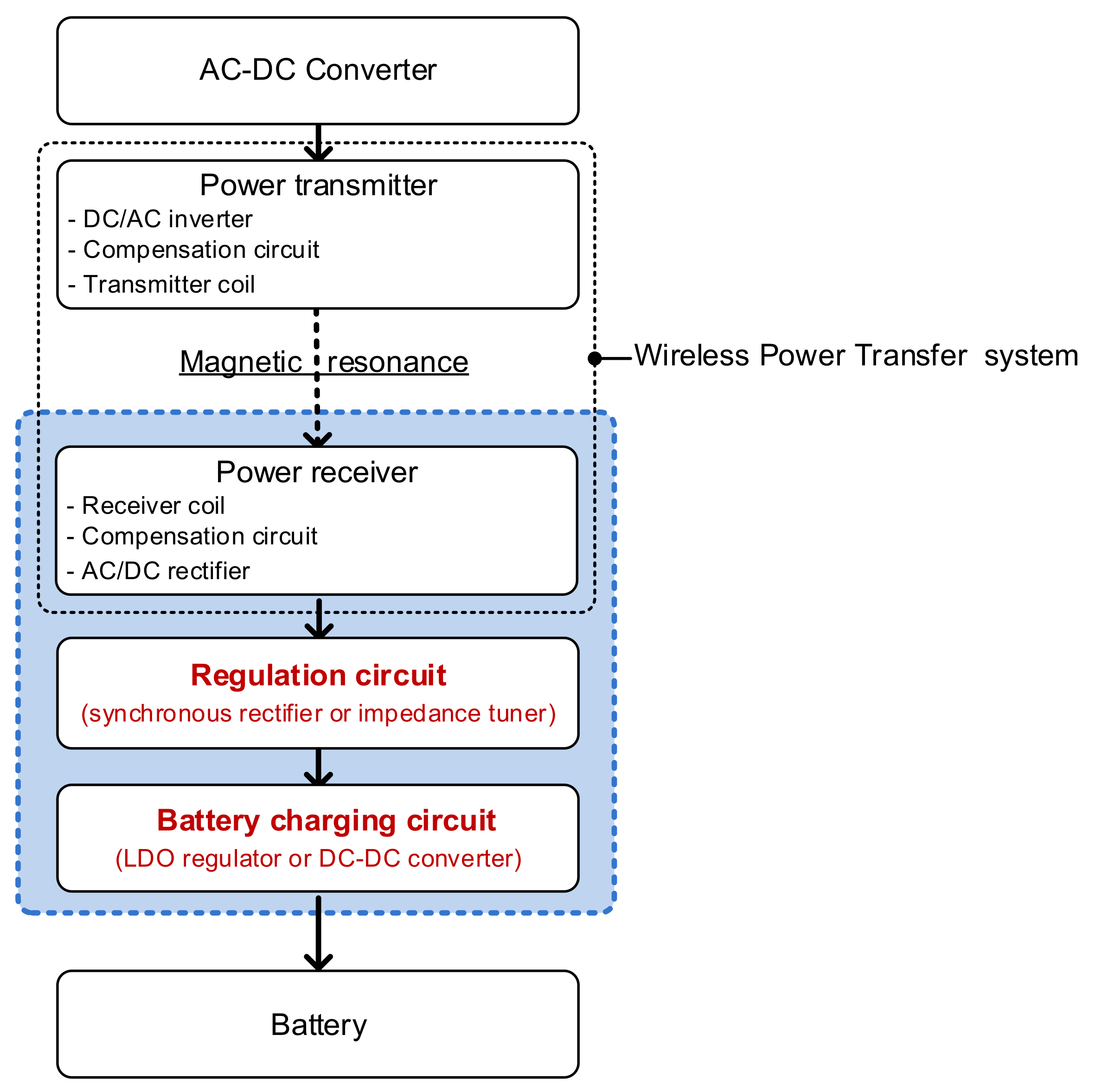


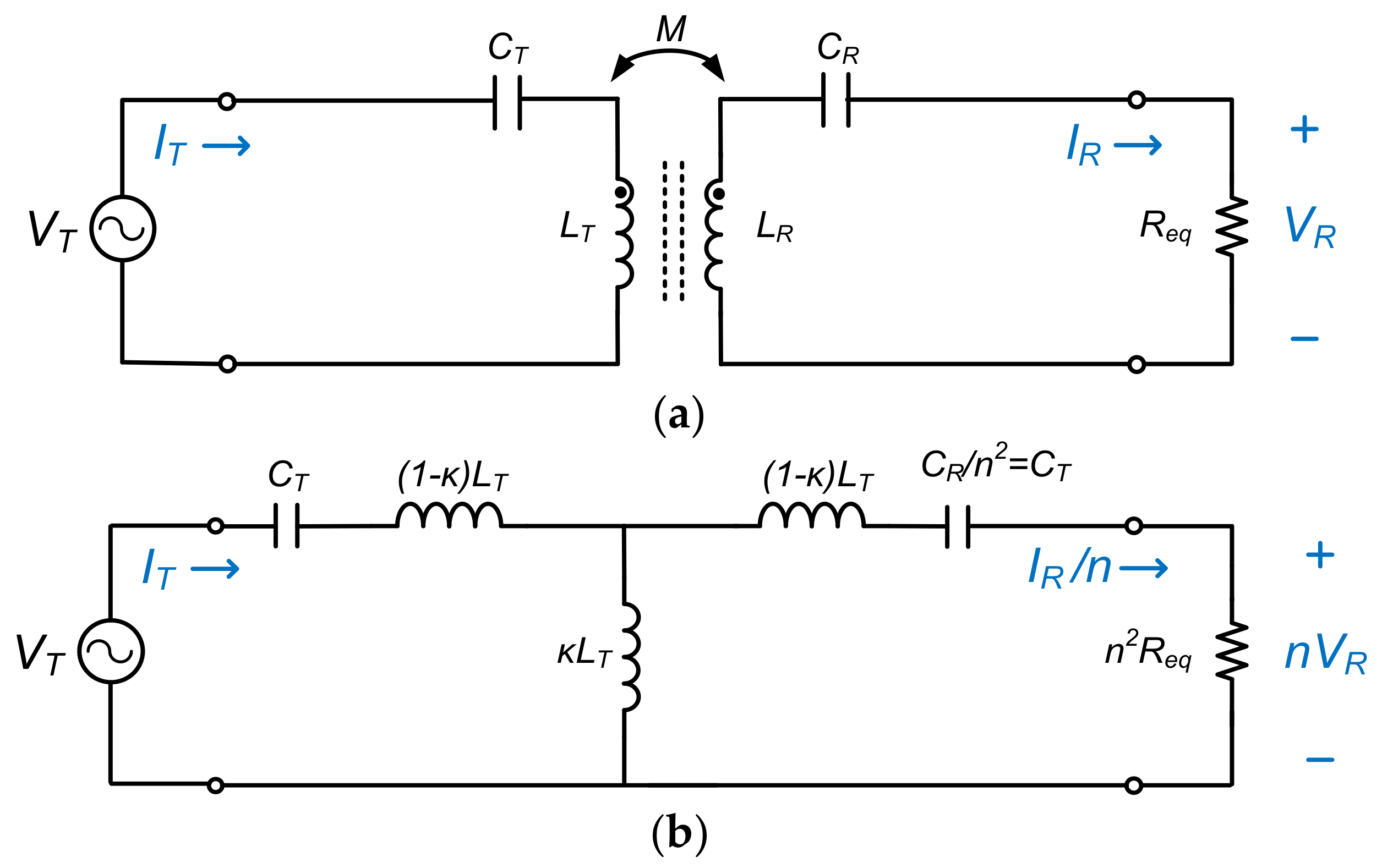
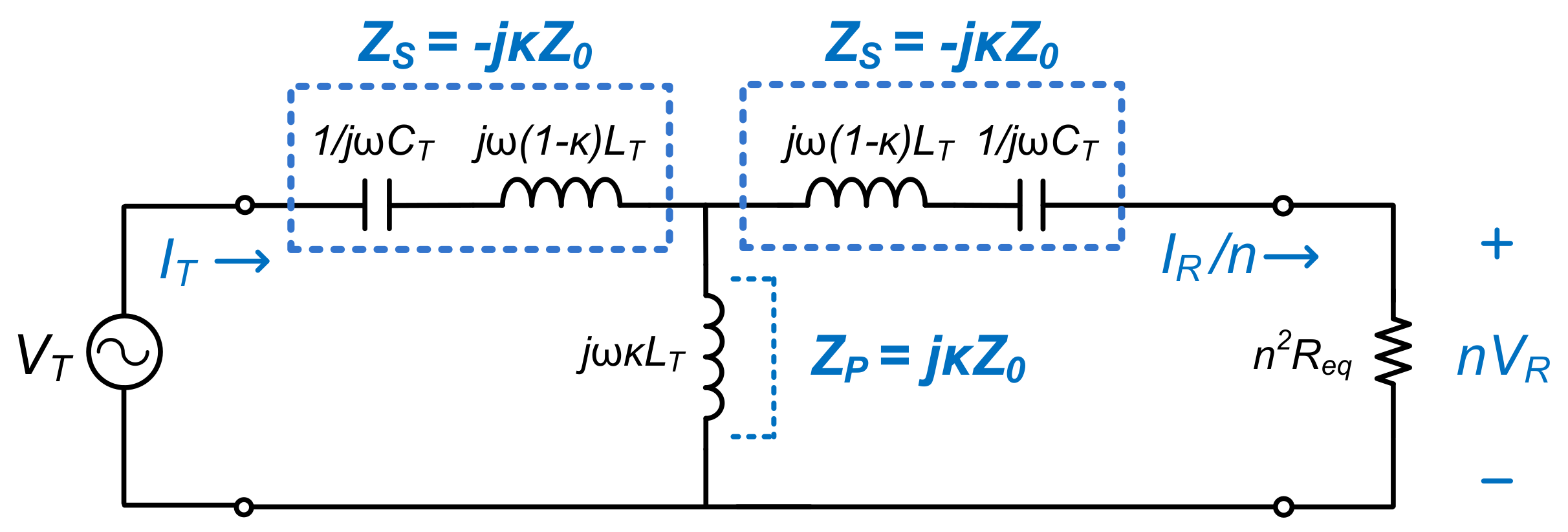

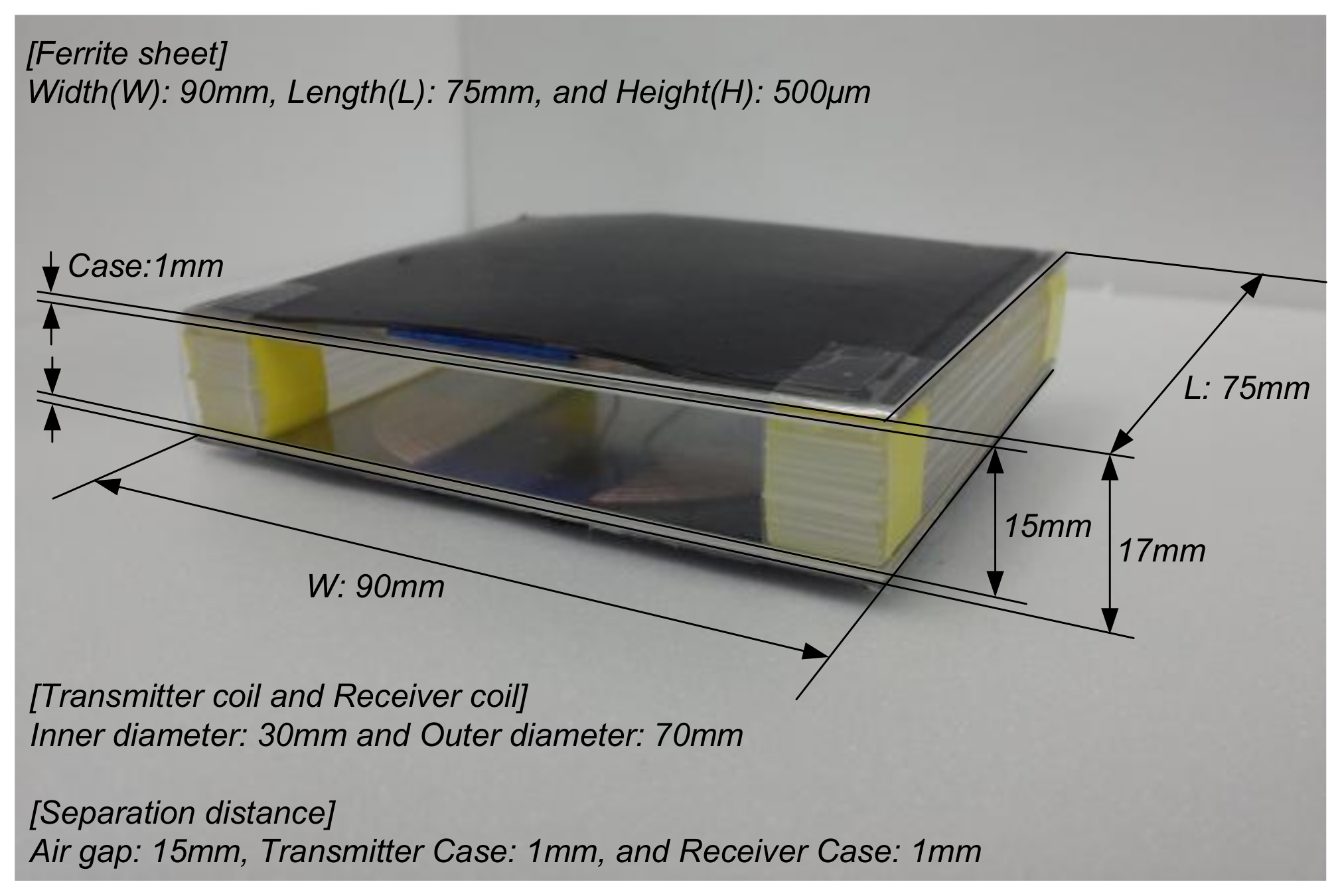
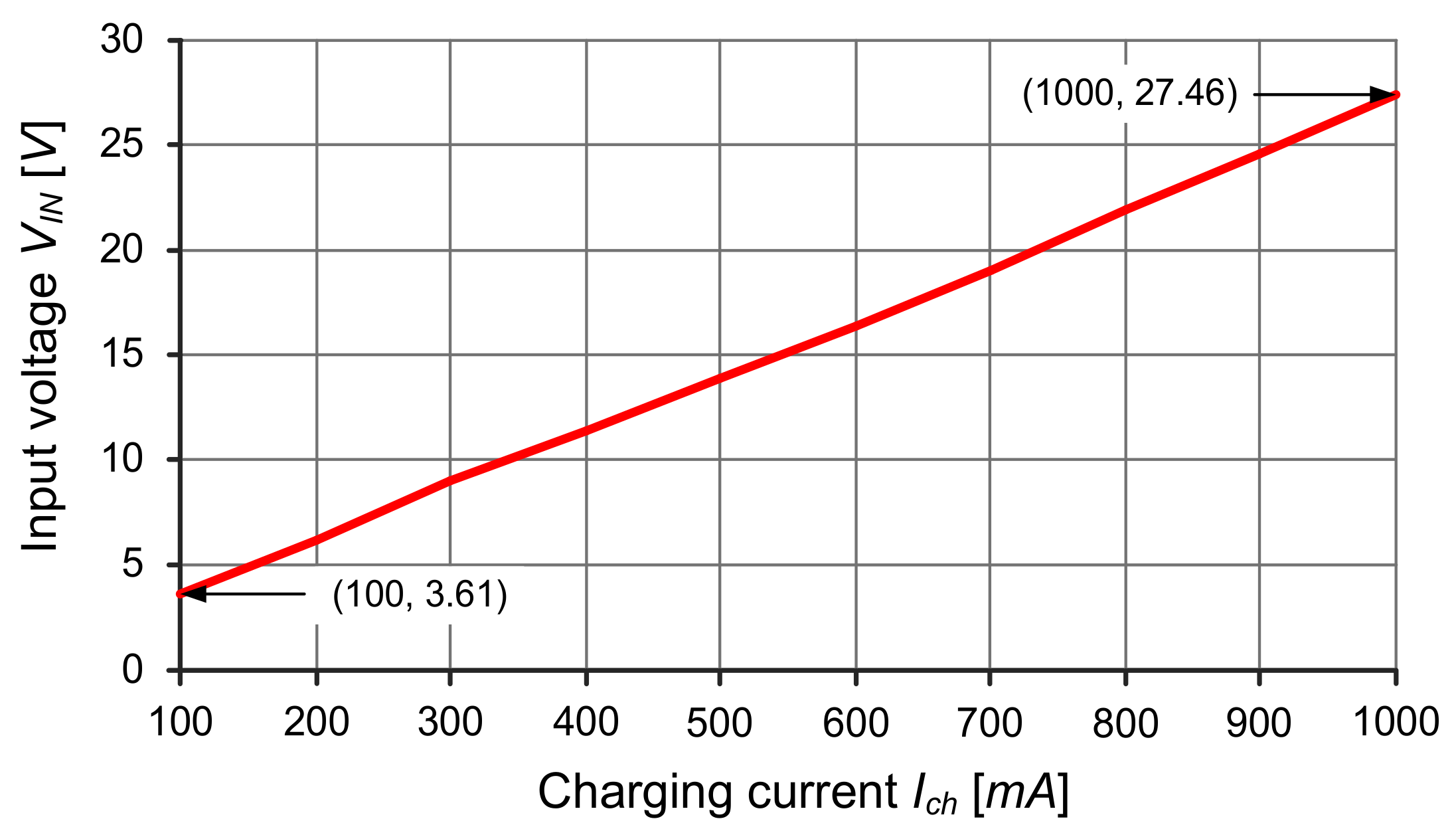
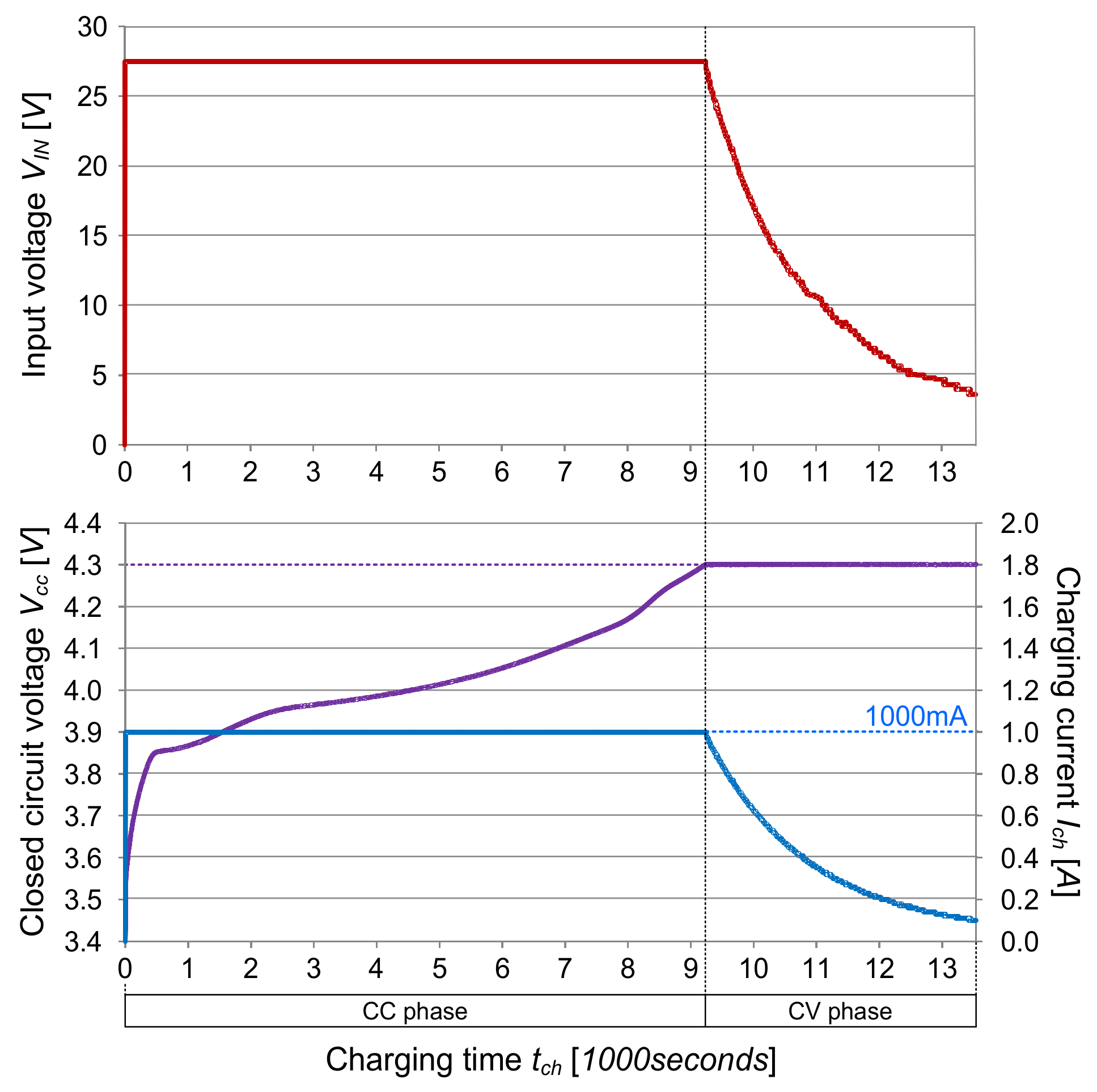
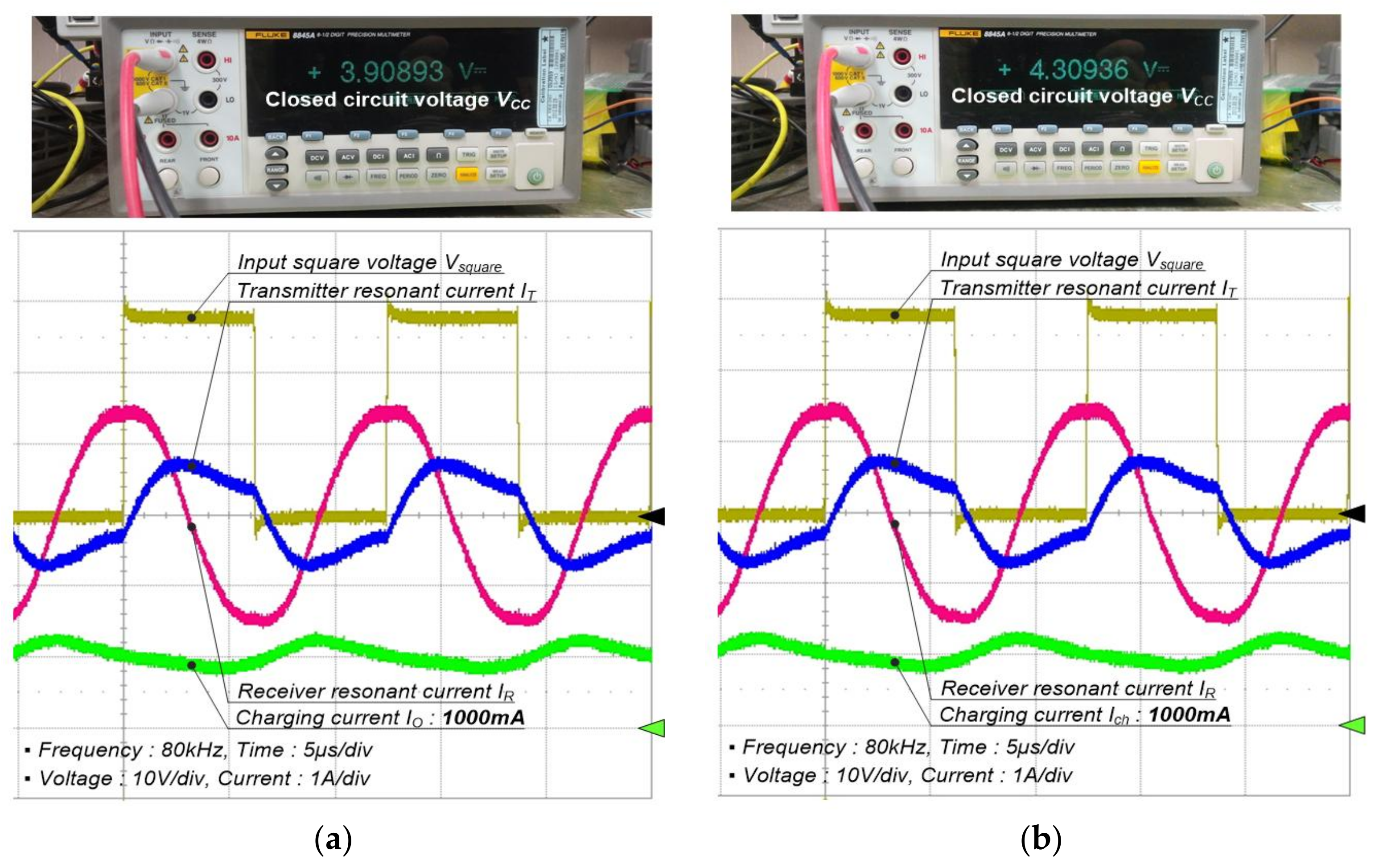


| Symbol | Description | Values/Part Name |
|---|---|---|
| LT | Self-inductance of transmitter coil | 50 μH |
| LR | Self-inductance of receiver coil | 50 μH |
| κ | Coupling coefficient | 0.4 |
| n | Turns-ratio | 1 (27:27) |
| CT | Transmitter capacitance | 78 nF |
| CR | Receiver capacitance | 78 nF |
| Q1, Q2 | Switches | 50CN10N |
| D1–D4 | Diodes | PMEG4030ER |
| fr | Resonant frequency | 80 kHz |
© 2018 by the authors. Licensee MDPI, Basel, Switzerland. This article is an open access article distributed under the terms and conditions of the Creative Commons Attribution (CC BY) license (http://creativecommons.org/licenses/by/4.0/).
Share and Cite
Lee, W.-S.; Kim, J.-H.; Cho, S.-Y.; Lee, I.-O. An Improved Wireless Battery Charging System. Energies 2018, 11, 791. https://doi.org/10.3390/en11040791
Lee W-S, Kim J-H, Cho S-Y, Lee I-O. An Improved Wireless Battery Charging System. Energies. 2018; 11(4):791. https://doi.org/10.3390/en11040791
Chicago/Turabian StyleLee, Woo-Seok, Jin-Hak Kim, Shin-Young Cho, and Il-Oun Lee. 2018. "An Improved Wireless Battery Charging System" Energies 11, no. 4: 791. https://doi.org/10.3390/en11040791





